I am sitting in the train towards Cologne because I will be attending an event there – the campaign of CuTE (Cultivating the Taste of Europe). The campaign is about informing end consumers about the benefits of European fruits and vegetables and clarify the European production processes. I am excited. Although I know how fruits and vegetables grow I want to learn how this is done on a large scale. Where does sustainability come in and what is done with regards to sustainability? What about safety? How do the production processes work? I am hoping to get some answers during the event.
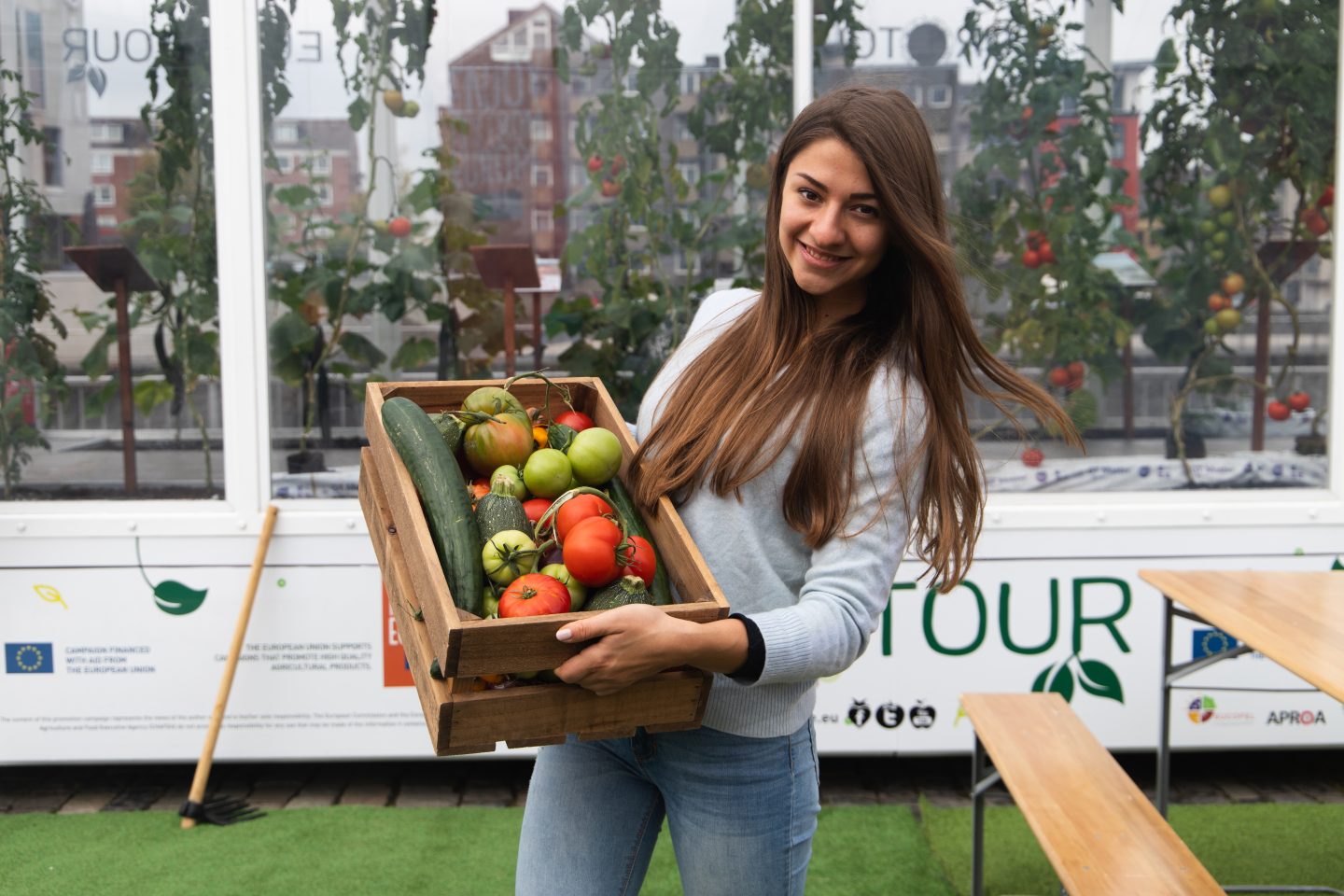
What is CuTE?
Like already mentioned CuTE is a shortcut for Cultivating the Taste of Europe. It is a campaign co-financed by the European Union. End consumers are supposed to get an insight into the production processes – but also prejudices regarding greenhouse production eliminated. The Eurotour leads the artificial greenhouse to several countries and invites the public to inform themselves. Schools and teachers are invited as well, to raise awareness in the young generation. At the event we get to talk to Jan van der Blom. He is technician, expert for greenhouse production and gives us interesting insights during the event. He also is the person we can ask any questions and he answers them extensively.
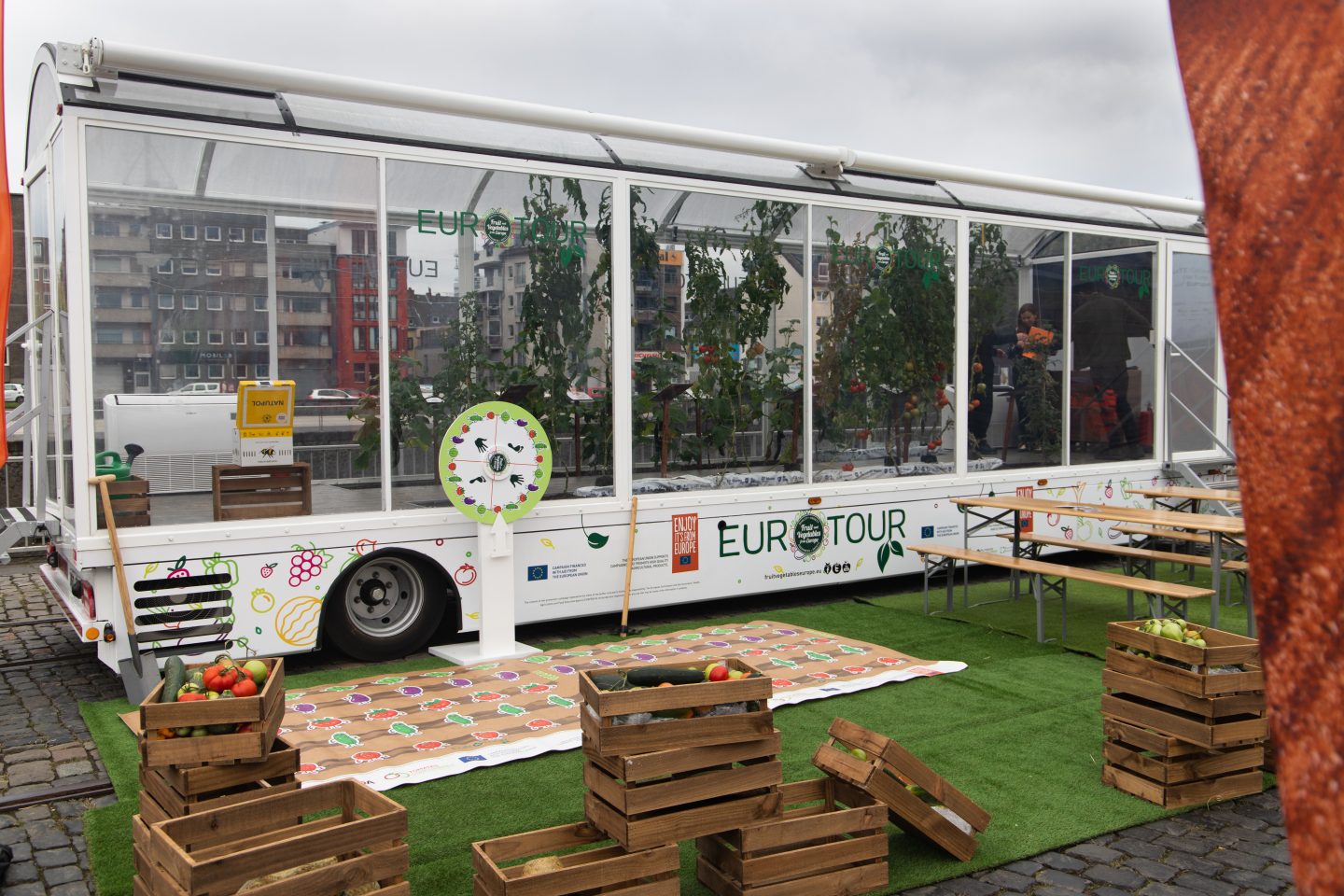
How is food safety ensured?
When you think about safety of fruits and vegetables probably one of the first things you‘ll think about are pesticides. Regarding this topic I learned something new at the event. To reduce the amount of pesticides used the use something called biological control. This is a method where natural predators of the pests are introduced in the greenhouses which then reduces the amount of pests. Although these predators also take a little bit of the plants away, it is very little compared to the damage that pests usually cause.The good thing about this method: they a) use less pesticides and b) avoid the building of resistances. Often synthetic all-round pesticides work for a certain amount of time but only until the pests build a resistance. As Jan van der Blom puts it: a mouse will never build a resistance towards a cat. Using biological control is based on this principle.
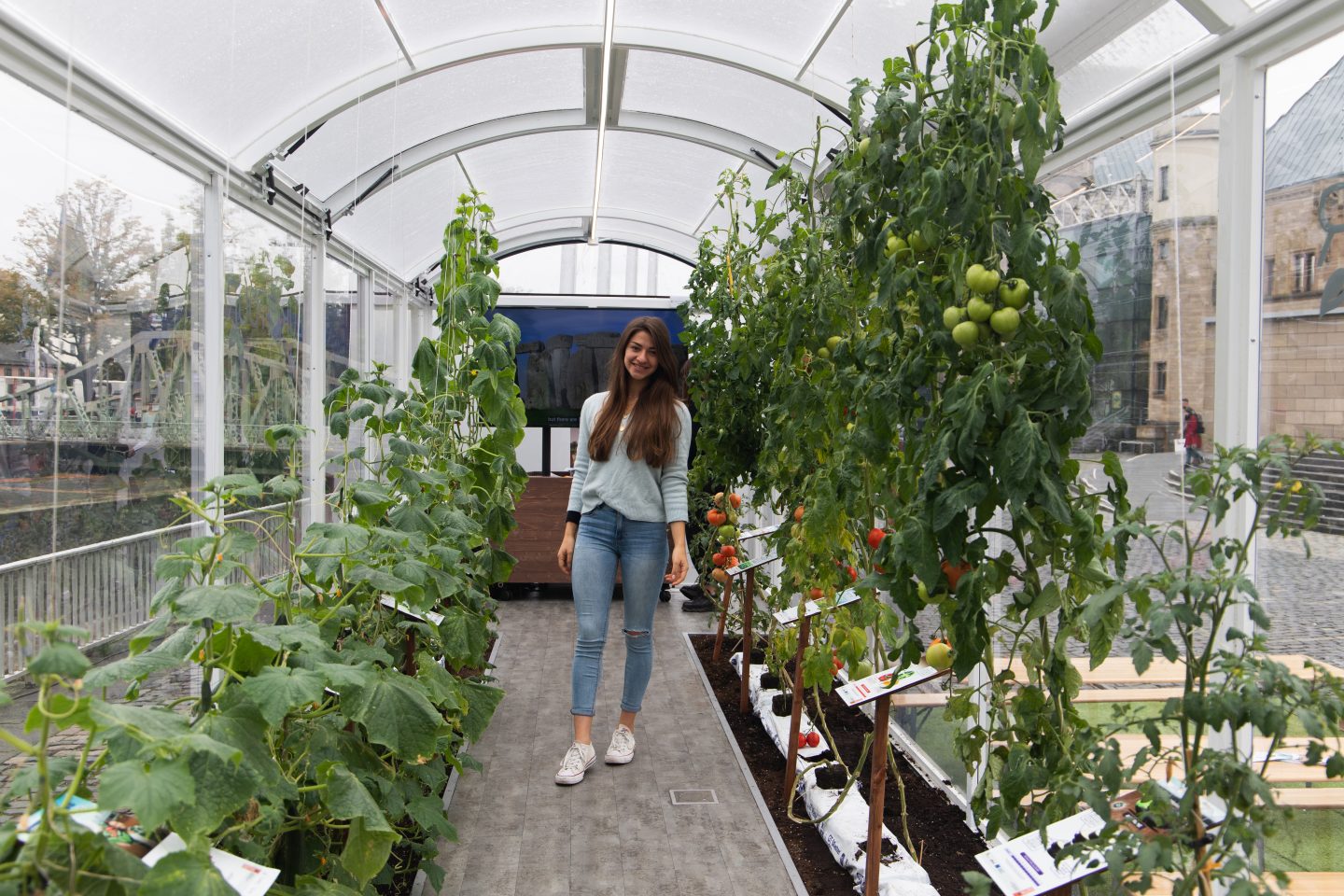
Especially in greenhouses the usually use bumblebees. Why? They help the natural pollination of the plants. This also has the positive side effect that most pesticides can’t be used to protect the bumblebees.
How is the issue of sustainability covered in the European fruit and vegetable production?
Sustainability is, how Jan van der Blom defines it, to design your processes in a way that they leave a planet which is still functioning for future generations. Especially with greenhouse production there have been a lot of criticism regarding sustainability – in fact, most of the greenhouses are build out of plastic.
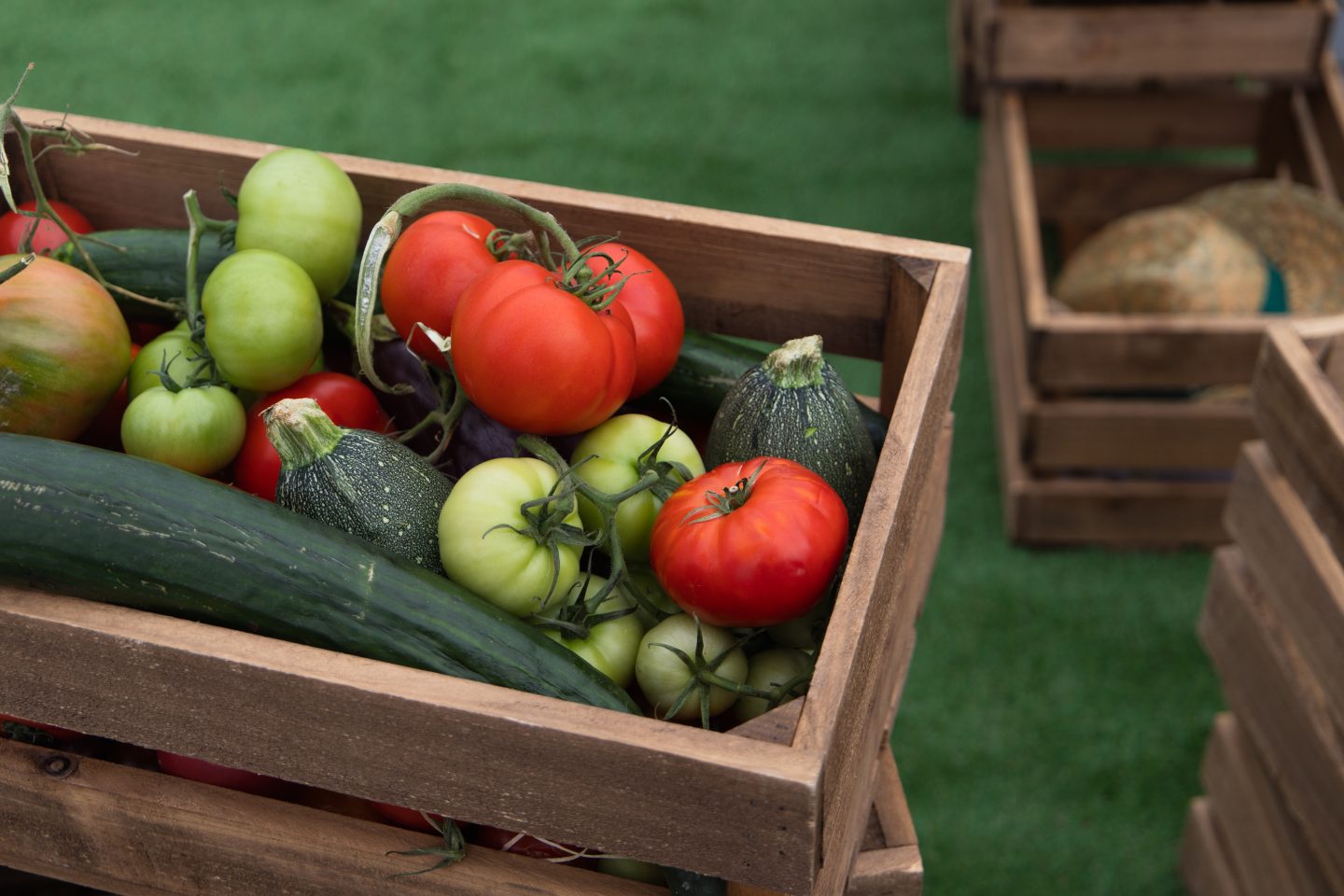
The three components of sustainability
Sustainability with regards to fruit and vegetable production comprises of three main components: pest control (as explained above), resource management and recycling.
Resource Management
Resource management is all about optimizing the usage of water, soil and electricity. To save water they use the so called drip irrigation in greenhouses, which allows watering each plant individually. However, there is still room for improvement. The organization believes that through measuring the soil humidity and water with regards to it, they can save up to 30% of the water volume currently used. To achieve this, devices to measure the humidity are used. This technology is already available in manual devices, the goal here is to automize it and make it easier for the grower so everyone can use it.
Recycling
When it comes to recycling you have to differentiate between the type of waste. The main waste occurring in greenhouse production is metal, organic scraps and plastic. According to the expert, metal is already recycled very well. Organic scraps used to be burned which caused huge CO2 Emissions but luckily this is forbidden these days. Instead, organic scraps are now composted. This process can be even further improved by taking care of clean organic scraps, meaning that there is no contamination with metal or plastic pieces.
The plastic issue
Lastly we also discussed on the topic of plastic. The greenhouses themselves are often build from plastic and last up to 40 years. Taking into account the amount of vegetables that is produced in these greenhouses, plastic foils and other plastic waste about 8g of plastic is needed to produce one kilogram of tomatoes.
The greenhouse ceilings are less of a problem since they are big pieces of plastic and thus can be recycled really well and fairly easy (growers are also paid well for them à incentive to recycle). The problem is located at the small plastic pieces like plastic foils. Apparently 70-80% of all plastic in the production is already recycled well – aiming at getting to 100%. The organization is really aware of the plastic problem.
But why do supermarkets still offer a lot of fruits and vegetables wrapped in tons of plastic? The answer of Jan van der Blom is quite clear: the supermarkets are in this perspective the clients and decide how fruits and vegetables are presented to the end consumer. This again shows me that it all comes down to our consumption patterns – if we buy less fruits and vegetables that are wrapped in plastic the supermarkets will have to adjust to the demand.
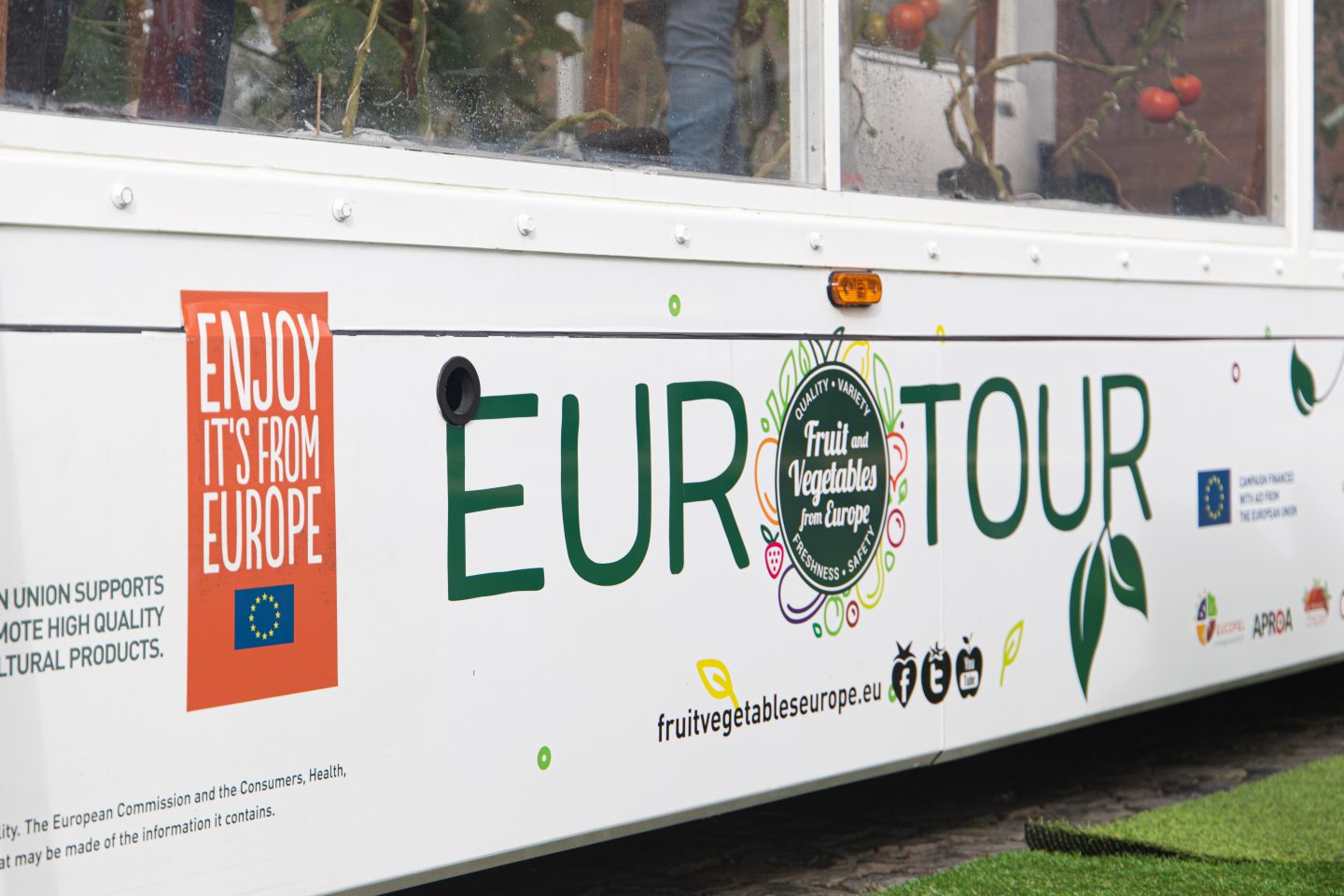
Final thoughts
If I have the choice, I will always go for regional produce. However, in winter that often means cutting back a lot. I have the biggest respect for people who are really consequent with that regardless the season. But if I can’t resist I at least try to pick fruits and vegetables which have been produced in Europe instead of buying tomatoes from New Zealand.
Of course one day is not enough to really dig deep in the topic of fruit and vegetable production in Europe. The event was a great opportunity to get a first insight and a starting point for further researches, though. Lastly I want to remind you to always question any information you get and do your own research. More information regarding the event and the campaign can be found on fruitvegetableseurope.eu.
#cuteurope #cultivatingthetasteofeurope #fruitvegetableseurope
